X-ray Fluorescence Spectroscopy, Part I: The Educational Essentials
Spectroscopy
The main areas of training necessary for a good foundation in the analytical methodology of XRF spectroscopy are discussed.

This column installment is the first in a series describing the educational components and processes necessary in learning the technique of X-ray fluorescence (XRF) spectroscopy. Here, we discuss the main areas of training necessary for a good foundation in the analytical methodology of XRF spectroscopy. The installment begins with the place of XRF in the analytical instrumentation spectrum and defines its capabilities and compares them to other elemental analysis techniques. Then a description of a general spectrometer is provided so that the different types and capabilities of the various XRF spectrometers can be listed and understood. This leads to a discussion of the conceptual physics that occurs during XRF analysis, including the physics of the interactions occurring inside the sample that are not related to the spectrometer.
After one goes through the process of evaluating different types of X-ray fluorescence (XRF) spectrometers, and then purchases one, the next task is learning how to use it. Operation of the instrument has now been reduced to pushing one button for production laboratory operation with the vendor initially supplying the program setup and calibration necessary to facilitate this method of analysis for the main bread and butter operations of the laboratory. However, when a new material appears on the task list, and the operator must build a program and calibrate the XRF system by themselves, that is when the fun starts. It soon becomes clear that a basic foundation of X-ray physics, as well as some knowledge of how to build a "general application," will be necessary to prepare the instrument to give the most accurate and precise analysis possible and to have confidence in the analysis should it be challenged.
There are not as many resources for acquiring an education in XRF as one might think if the goal is to build a solid foundation of concepts and experience in the necessary areas of X-ray physics, instrumentation hardware, XRF (vendor specific) software, and applications knowledge (Figure 1). Many good texts are available from experts in the field (1–3) and articles about the subject give good guidance (4,5), but slogging through them is not desirable in the high productivity, "little time to do things" world of today. Manufacturers normally provide customer user courses, but from necessity they must focus on the particular hardware components of their instrument, which vary from vendor to vendor, and on the operation of their particular software, which even varies from model to model within a manufacturer's product line. This leaves little time for the fundamental X-ray principles and even less time for suggesting generalities between applications: Many concepts can be taught about "Element X," rather than speaking about a specific element. In fact, the typical beginner is frustrated by the discussion of "Element X," desiring to speak about the specific elements dealt with in his or her everyday operations instead. Eventually, however, as certain general concepts are applied and practiced, the advantages of learning this way become apparent. Ultimately, all parties concerned realize that there is a lot to learn and that it will take a long time to learn it well. To do so, many basic concepts must be taught first, as is so with any scientific endeavor based on physics, mathematics, and chemistry.
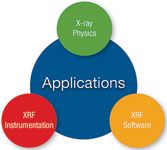
Figure 1: XRF education foundation.
So, the hope of the vendors is to give enough training in the typical one-week course to allow the attendee to return to his or her laboratory and produce results with a new XRF system. Having been in this situation for the better part of 27 years with X-ray manufacturers, and having been responsible for customer training for most of that time, this author (J.A.A.) can vouch for this description of the teaching and learning process with confidence. This is an unfortunate situation for which there is no alternative in the industrial world. Furthermore, the study of the XRF discipline is so rich and varied, that it is only after a great deal of study, application, and trial and error, that one begins to accumulate enough knowledge to accelerate the process of learning. Therefore, after a student acquires a certain amount of knowledge regarding his or her specific hardware and software, it is possible and hoped for that the user can or will now "bootstrap" himself along. Often, this results in uncertainty about how to develop a new method and uncertainty about the numbers that are produced when using it. In the United States, a course has been designed to expand the user's knowledge into the areas of the fundamental physics and general applications, thus allowing a more confident approach to setting up a new specific application and trusting the numbers it generates (6).

Figure 2: Electromagnetic spectrum.
The Place of XRF in the Grand Unified Theory of Physics — The Electromagnetic Spectrum
It is useful to first determine the place of the X-ray technique in the overall world of physics and chemistry. We start with the grand unified theory (GUT) of physics (as good a place as any to start), which describes the universe in terms of the four fundamental forces of nature (the strong nuclear force, the weak nuclear force, the electromagnetic spectrum, and gravity). Now we can narrow our discussion to the electromagnetic spectrum (Figure 2). Nature provides a continuous range of wavelengths (or energies) on which many instrumental techniques are based. As can be seen, the X-ray region occupies an area of high energy and short wavelengths, which range approximately from 0.01 to 20 nm. It is important to note the inverse relationship between wavelength and energy. This phenomenon can cause many a problem during the initial learning period if not understood and remembered.
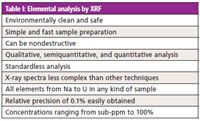
Table I: Elemental analysis by XRF
X-ray Capabilities
Before going further, it is necessary to make sure the choice of instrumental technique will solve the analytical task at hand. Because XRF is blessed with many unique capabilities (Table I), it has become the technique of choice for many applications requiring accurate elemental analysis for the purpose of meeting tight specifications at high concentration levels. These applications include cement, mining, geology, catalysts, oils, plastics, steel, iron, high alloys, super alloys, precious metals, nonferrous metals, ferro-alloys, and many others. The attributes that bring it to the top of the list for these applications are
- the wide range of elements it is capable of determining on a routine basis (Na through U);
- the wide range of concentrations it is capable of analyzing (parts per million to 100%);
- fast and easy sample preparation for most materials analyzed;
- the ability to achieve better precision with increasing concentration (0.1%) in very short analysis times; and
- a relatively simple spectrum that, unlike many other techniques, has relatively few analytical wavelengths from which to choose, thus providing a spectrum that is uncluttered and free of line overlaps.
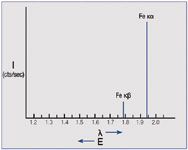
Figure 3: XRF emission lines of iron.
Although line overlaps can be removed by a plethora of mathematical methods, the best approach and most accurate analyses are obtained using analytical lines that are free of line overlap. An example of the simplicity of the XRF spectra is shown in Figure 3. The analytical lines most commonly used for XRF analysis are the K-alpha and K-beta lines. There are only five other iron lines that might possibly be used for analysis, but usually they are not. In fact, eight is the highest number of lines that can be used for analysis for the highest atomic numbered elements. In contrast, the spark emission lines for iron are shown in Figure 4. This spectrum, like those of many of the elements analyzed using other spectroscopic techniques, has thousands of lines, making the choice of line to be analyzed very difficult, and matrix dependent. The difficulty can be imagined from a multicomponent matrix containing many elements, all of which generate thousands of lines. Keeping this in mind, a review of the capabilities of the some of the most common instrumental techniques for elemental analysis (Table II) will narrow the analyst's choice quickly to the best instrument for the task at hand.

Figure 4: Spark emission lines of iron.
XRF Instrument Configurations
The next concept to be understood when learning and choosing the XRF technique is the spectrometer configuration type. Most hardware configurations of XRF instrumentation are relegated to either wavelength-dispersive XRF (WDXRF or just WDX), and energy-dispersive XRF (EDXRF or just EDX). Figures 5 and 6 show the different concepts and component configurations used with these two different XRF spectrometer types. The EDX system excites a sample using an X-ray tube, generating characteristic radiation for each element in the sample. A portion of that radiation is directed to a detector, which serves the purpose of determining the energy of each characteristic X-ray generated (qualitative analysis) and the number of X-ray photons per second for each energy (quantitative analysis) simultaneously. A computer containing various algorithms converts the intensity (number of photons per second) for each element to concentration.

Table II: Comparison of analytical techniques
The WDXRF system operates in a similar fashion, except that an analyzing crystal is inserted between the sample and the detector for the purpose of separating (resolving) the different wavelengths (energies), and then directing those wavelengths to the detector individually, one at a time in sequence (sequential WDXRF spectrometer). These two different configurations have different advantages and disadvantages and will be discussed in a future column installment.
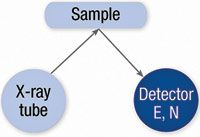
Figure 5: X-ray fluorescence spectrometers - energy-dispersive XRF (EDX, EDXRF).
It is useful now to consider the concept of a "general" spectrometer (Figure 7). A modern "general" spectrometer is composed of components such as a source, a sample area, a dispersion device, a detector, processing electronics, a microprocessor, and possibly a computer and printer. Different individual sources are designed and used to generate all of the wavelengths (energies) in the electromagnetic spectrum for the various instrumental techniques and at different power levels. In the case of XRF, sealed X-ray tubes are capable of power levels ranging from 1 to 4000 W. The dispersion devices can be gratings, natural crystals, or layered synthetic microstructures. XRF uses the latter two. Detector types range from gas filled to solid state and even charge-coupled devices (CCD) for XRF. The microprocessors serve as the interface with the human operator and direct and coordinate all of the operations of the spectrometer, including capturing the data, processing it, or sending it to a computer for processing, or a network for distribution and storage. Some of the more important fundamental laws of physics that allow these components to perform their functions are listed in Table III and will be discussed in a future installment.

Figure 6: X-ray fluorescence spectrometers - wavelength-dispersive XRF (WDXRF).
Choosing only the components to make an XRF system, the spectrometer can be configured for bulk analysis to support production of primary materials such as steel, high alloys, cement, catalysts, nonferrous materials, oil and fuels, and plastics. Recent XRF configurations include handheld spectrometers used for metal sorting and mining prospecting, as well as environmental and toxic metal screening. Thin-film applications, wafer fabrication processing applications, microanalysis, automated systems eliminating human interaction from sampling to delivery of analysis, and other custom, noncommercial, specialized, industrial, or proprietary "homemade" XRF system configurations that populate the industrial world have been well established for decades.

Figure 7: Concept of a general spectrometer.
Qualitative, Quantitative, and Standardless Analysis — Data Reduction
Qualitative and Standardless Analysis
With the advent of automated elemental identification software routines, manual identification of the elements by the operator for qualitative analysis became less and less popular. The development of capable, standardless analysis software further hastened the decline of manual identification to the point that manual identification of the spectrum is nearly extinct. Nevertheless, the reliability of automated identification becomes problematic below 100 ppm and human abilities begin to outperform automated software routines at that level. In many cases, it may be necessary to closely inspect an automated qualitative analysis before reporting or it may be necessary to simply perform it manually because of the complexity of the matrix. In these cases, knowledge of the basics of qualitative analysis is required and these skills are often neglected because of time restraints.

Table III: Important XRF concepts
Standardless analysis has varying degrees of accuracy depending on the matrix, and it is best for the novice XRF operator to learn what those capabilities are and, in general, why they are limited. For instance, accuracies on steel over a very wide range can approach an impressive 1% relative. However, when analyzing pressed powders the error can balloon to 5%, and even 10% relative, again depending on the matrix. The implementation of the sample preparation method for different matrices is paramount to the accuracy that can be achieved and, once again, this topic needs to be well understood and practiced if there will be any hope to achieve an accurate analysis. The choice between pressed powder and fusion sample preparation is quite important. The fundamental physics and chemistry of these preparation methods as well as when and when not to use them will be the topic of a future installment.
Quantitative Analysis
After the data have been processed to remove detector curvature, missing dead time counts, drift correction phenomena, and line overlap problems, the intensities (in counts per second) can be converted to weight percent concentrations by means of a calibration curve constructed from reference standards and intensities from the XRF system. Because XRF is a comparative technique, the rule of thumb is that the more the matrix of the standards is like the matrix of the unknowns, the higher the accuracy will be. For this reason, the method of preparation of both the standards and the unknowns is paramount to achieving the highest accuracy possible. After the operations described previously have been performed to acquire corrected intensities, there are several different conversion algorithms beyond straight line regression that make corrections for the interelement effects (absorption and enhancement) occurring in the sample before the characteristic intensities even get to the rest of the spectrometer. A good grasp of both mathematical and statistical concepts is necessary in choosing the appropriate algorithm for calibration to keep the operator from reporting grossly incorrect results. The theoretical process of using the fundamental parameter method of processing the data has become more and more popular and should also be learned and kept in the operator's bag of tools.
Finally, the topics of precision and accuracy, counting statistics, random and systematic error, analysis of variance, multiple regression, and limit of detection (LOD) need to be understood in terms of what they mean, and how to calculate them.
Conclusions
After all of these concepts are presented, explained, discussed, and practiced, the XRF student is ready to face the real life laboratory and the challenges of producing accurate and credible numbers with the XRF spectrometer. The next installment will discuss the fundamental X-ray physics concepts taking place in the sample and the XRF spectrometer.
References
(1) E.P. Bertin, Principles and Practices of X-ray Spectrometric Analysis, 2nd ed. (Plenum Press, New York, 1975).
(2) R. Jenkins, X-ray Fluorescence Spectrometry, 2nd ed. (John Wiley & Sons, New York, New York, 1999).
(3) R. Jenkins and J.L. de Vries, Practical X-ray Spectrometry, 2nd ed. (Springer-Verlag, New York, New York, 1969).
(4) J.A. Anzelmo and J.A. Lindsay, J. Chem. Educ. 64(8), A181–A185 (1987).
(5) J.A. Anzelmo and A.I. Buman, "Evaluation Criteria for Wavelength Dispersive XRF Instrumentation," American Laboratory, International Scientific Communications, Fairfield, New Jersey, 1988.
(6) ICDD XRF Clinic, "Practical X-ray Fluorescence," annual, Newtown Square, Pennsylvania, http://www.icdd.com/education/xrf.htm.
Marie-Ève Provencher is a Technical Representative (M.Sc. Chemist) with Corporation Scientifique Claisse in Quebec City, Quebec, Canada.

Marie-Ãve Provencher
Mathieu Bouchard is the Fusion and XRF Applications Manager (M.Sc. Chemist) with Corporation Scinetifique Claisse in Quebec City, Quebec, Canada.

Mathieu Bouchard
John A. Anzelmo is the president of Claisse USA in Madison, Wisconsin. He is also the ICDD XRF Technical Program Director for the International Centre for Diffraction Data in Newtown Square, Pennsylvania.

John A. Anzelmo
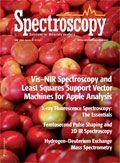
AI Shakes Up Spectroscopy as New Tools Reveal the Secret Life of Molecules
April 14th 2025A leading-edge review led by researchers at Oak Ridge National Laboratory and MIT explores how artificial intelligence is revolutionizing the study of molecular vibrations and phonon dynamics. From infrared and Raman spectroscopy to neutron and X-ray scattering, AI is transforming how scientists interpret vibrational spectra and predict material behaviors.
Advancing Corrosion Resistance in Additively Manufactured Titanium Alloys Through Heat Treatment
April 7th 2025Researchers have demonstrated that heat treatment significantly enhances the corrosion resistance of additively manufactured TC4 titanium alloy by transforming its microstructure, offering valuable insights for aerospace applications.